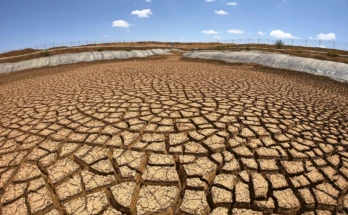This is a cooling system, can be used on a day that is bright, sunny, and cloudless, which may seem like the ideal environment for solar cells. However, excessive heat and sunlight can actually lower the effectiveness of photovoltaics.
Traditional silicon-based solar cells will lose roughly 0.5% of their efficiency for every 1 degree Celsius increase in operating temperature. Energy losses can approach 12% in a typical solar facility when modules operate at temperatures up to 25 degrees Celsius above the surrounding air.
For solar farms, this demands efficient cooling techniques. Researchers from Portland State University, the University of Utah, and the National Renewable Energy Laboratory investigated how to take use of the geometry of solar farms to improve natural cooling mechanisms in the Journal of Renewable and Sustainable Energy.
While some contemporary cooling techniques use materials with less heat sensitivity, others induce wind or water to interact with solar panel surfaces. However, the resources needed to use these strategies are substantial. In contrast, a solar farm with correctly oriented panels that are appropriately spaced might use the wind from the environment to cool itself through convection.

The group enhanced models that determine how much electricity a specific solar plant will produce based on elements like material, weather, and panel temperature. They concentrated particularly on the geometry of solar farms, or the degree of “gappy-ness” between the panels.
According to author Sarah Smith of Portland State University, “our theory was that the most precise assessment of solar plant convection, and eventually output efficiency, must take the farm as a whole and all possible configuration variations.”
Due to design, it is uncommon for two solar farms to be identical. Each is specially made to maximize solar irradiance and fit into its surroundings. Solar panels, for instance, fluctuate in tilt with latitude and height with vegetation. Row spacing is frequently influenced by the amount of available land.
According to Smith, “this means that the wind flow that removes heat will also move differently throughout each solar plant dependent on its design, ultimately influencing how efficiently heat is removed from module surfaces.”
To validate their model, the researchers ran wind tunnel tests, high-resolution simulations, and gathered empirical data. They studied the effects of module height, row spacing, angle, and wind on photovoltaic heating and cooling. Power output increased by 2% to 3% as solar cell height and panel row spacing were increased.
As a result of their essentially distinctive configurations, solar farms can now be predicted to experience convective cooling, according to Smith. It provides the path for industry to develop cost and energy generation forecast models that are more precise.
According to Sarah E. Smith, Brooke J. Stanislawski, Byron K. Eng, Naseem Ali, Timothy J. Silverman, Marc Calaf, and Ral Bayoán Cal, “Viewing convection as a solar farm phenomenon broadens modern power predictions for solar photovoltaics” will be published in the Journal of Renewable and Sustainable Energy on November 29, 2022.
Read More
- New “Smart Inverters” May be Vulnerable to Cyberattacks – Researchers Say
- Researcher Develops New Method of Recycling Urine – They Realized that Current Toilet Technology Flushes Profits.
- How Engineers Have Improved Solar Cell Efficiency and Stability
- See How Four-legged Robots Run Efficiently in the Wild, Thanks to Improved Algorithms
Conclusion
This post has introduce us to a cooling system, use for cooling down solar cells, naturally. this is a great post because is very useful for those using solar. you can drop your comment on comment section.



